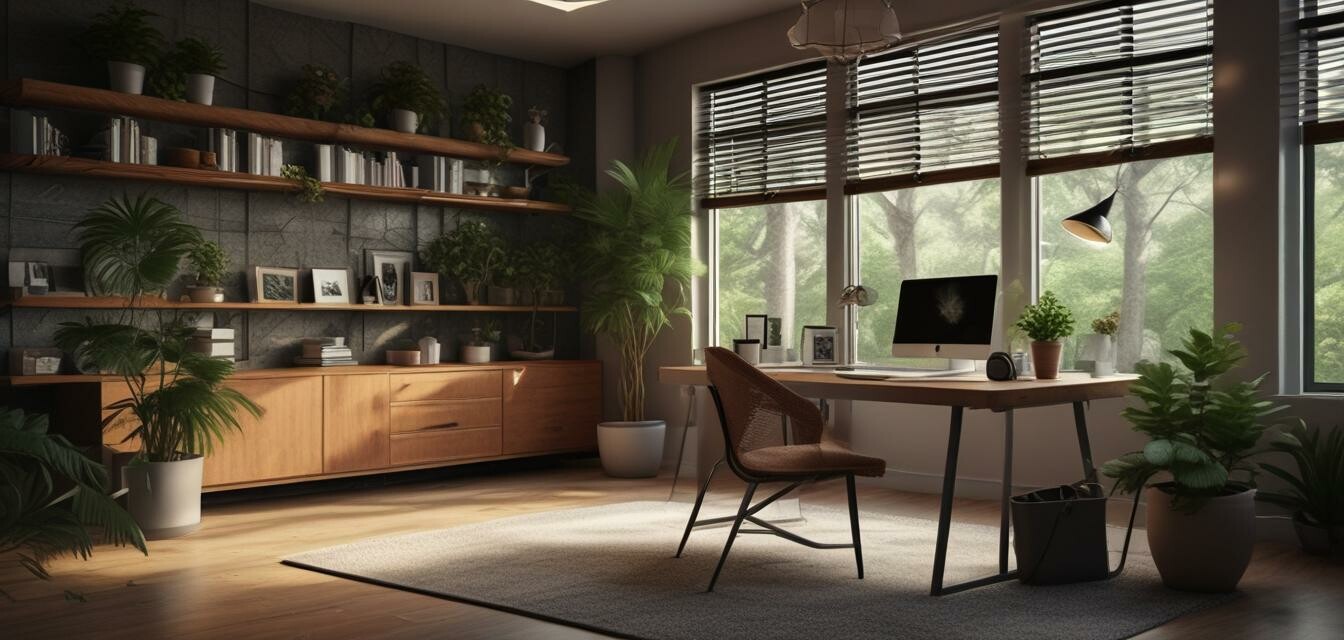
How to build a sustainable home office
Key Takeaways
- Focus on eco-friendly furniture and materials.
- Utilize energy-efficient technology and gadgets.
- Create a workspace that promotes productivity while minimizing environmental impact.
- Incorporate natural elements like plants for better air quality and aesthetics.
- Implement sustainable practices like digital documentation to reduce paper waste.
Building a sustainable home office is a crucial step toward environmental responsibility. As more people embrace flexible working arrangements, creating an eco-friendly workspace can help reduce your carbon footprint and promote a more healthy lifestyle. This guide will provide you with tips and guidelines on integrating sustainable practices into your home office setup.
Why sustainability matters in your home office
As concerns about climate change and environmental degradation grow, adopting sustainable practices in every aspect of life becomes essential. Your home office, where you spend many hours each day, can significantly impact your overall carbon footprint. By making informed choices, you not only contribute to a healthier planet but also create a workspace that fosters productivity and well-being.
Choosing eco-friendly furniture and materials
Your choice of furniture plays a significant role in creating a sustainable home office. Below are some factors to consider:
| Material | Benefits |
|---|---|
| Reclaimed wood | Durable and reduces the demand for new trees. |
| Bamboo | Fast-growing, renewable resource that absorbs carbon dioxide. |
| Recycled materials | Reduces waste and energy consumption in production. |
| Natural fibers (wool, cotton) | Biodegradable and chemical-free. |
Where to find sustainable furniture
When shopping for eco-friendly furniture, consider these options:
- Local shops specializing in sustainable products.
- Online retailers with a commitment to eco-friendly options.
- Thrift stores or second-hand furniture shops.
Incorporating energy-efficient technology
Technology can contribute to energy consumption, but many options are available to create a more sustainable office. Consider the following:
- Use energy-efficient LED lighting.
- Invest in Energy Star-rated devices.
- Utilize solar-powered chargers and devices.
Innovative gadgets for a sustainable workspace
Here are some innovative gadgets to consider:
- Smart thermostats: They can help save energy by optimizing heating and cooling.
- Wireless charging stations: Reduces the need for multiple chargers
- E-paper notebooks: Great for minimizing paper usage.
Creating a productive and eco-friendly environment
To enhance productivity while maintaining sustainability, focus on incorporating natural elements into your workspace:
- Add plants to improve air quality and aesthetics.
- Use natural light whenever possible to reduce energy consumption.
- Organize your workspace with minimal plastic use.
Implementing sustainable practices in your daily routine
In addition to furniture and equipment choices, your daily practices can also affect sustainability:
- Opt for digital documentation to limit paper usage.
- Turn off devices when not in use to save energy.
- Use a compost bin for organic waste from your home office.
Tips for building a sustainable home office
- Choose multi-functional furniture to reduce the need for additional items.
- Consider the end of life for your products and prioritize recyclability.
- Educate yourself on local recycling practices to ensure proper disposal of materials.
Conclusion
By implementing the tips mentioned above, you can easily create a sustainable home office that not only enhances your productivity but also contributes to a healthier planet. Embracing eco-friendly materials, technology, and practices will ensure that your workspace aligns with the principles of sustainability. Every small step you take contributes to a larger change—let your home office be a part of that change!
Pros
- Improved air quality with the addition of plants.
- Reduced carbon footprint through eco-friendly choices.
- Long-term cost savings due to energy-efficient technology.
- Enhanced comfort and well-being in a natural environment.
Cons
- Possibly higher initial investments in sustainable products.
- Limited selection of eco-friendly options in physical stores.
- Some sustainable materials may require more maintenance.